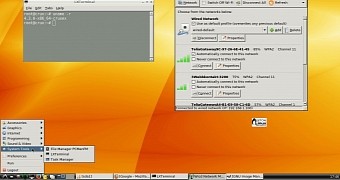Earlier today, November 25, we've been informed by Arne Exton, the developer of several GNU/Linux and Android-x86 distributions that are available for download right here on Softpedia, about the release and immediate availability for download of his CruxEX 3.2 operating system.
According to Mr. Exton, CruxEX 3.2 is now based on the recently released CRUX 3.2 GNU/Linux operating system, it's built around the lightweight LXDE desktop environment and includes the latest stable and most advanced Linux 4.3 kernel packages.
CRUX Linux users might have noticed that CruxEX 3.2 comes with a different kernel than the original CRUX 3.2 distribution, as Arne Exton decided to replace the Linux 4.1.13 LTS kernel packages with the more up-to-date Linux kernel 4.3 ones, which were injected with various extra patches.
"CruxEX 3.2 64 bit Linux Live CD/USB is based on CRUX 3.2," said Arne Exton in an email to Softpedia. "CruxEX 3.2 2016 uses the LXDE Desktop environment. I have replaced the original CRUX kernel with 'my' special kernel 4.3.0-x86_64-cruxex, with support for 'extra everything.'"
Available only for 64-bit systems
CruxEX 3.2 includes many other changes besides the ones mentioned above, such as the latest versions of the Mozilla Firefox web browser, GIMP image editor, and Wicd network manager applications, along with the addition of a collection of tools for users who want to install software from source.
The fact of the matter is that all the packages included in CruxEX 3.2 have been updated to their latest versions as of November 25, 2015. The operating system is available only for 64-bit systems, and it's distributed as both a zip file and an ISO image. You can download CruxEX 3.2 right now from Softpedia.
Mr. Exton informs our readers that they can install the CruxEX 3.2 operating system on their computers if they want to, but it is recommended to use a USB flash drive for that, as the Live ISO images come with persistence support. Of course, you can also run the OS on a virtual machine.

 14 DAY TRIAL //
14 DAY TRIAL //